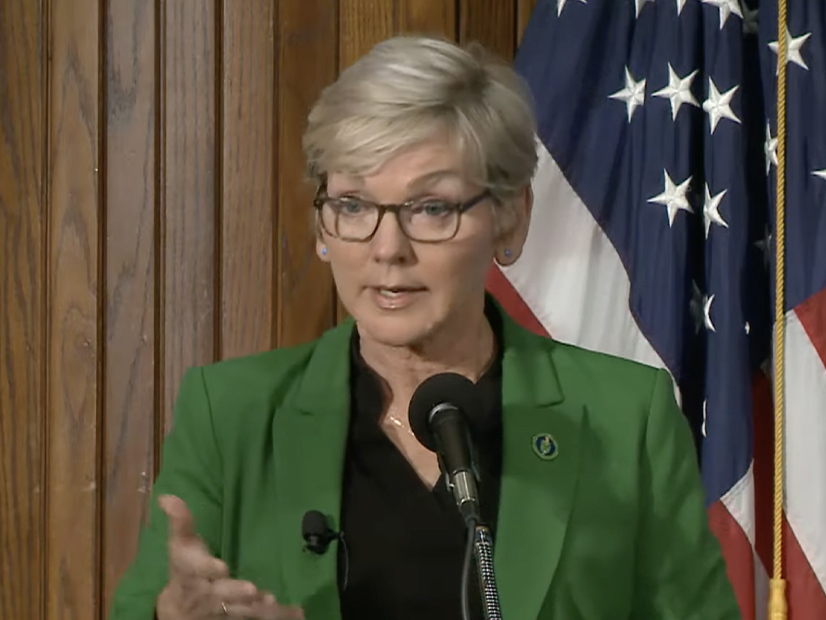
Clean energy policies funded by the Inflation Reduction Act and Infrastructure Investment and Jobs Act (IIJA) have been key to the U.S. economy’s strong performance, Energy Secretary Jennifer Granholm said Feb. 21 at the National Press Club in D.C.
The unemployment rate has been below 4% for the longest continuous stretch in 50 years, and among all advanced economies, the U.S. has seen the strongest recovery since the COVID-19 pandemic.
“It is not luck,” Granholm said. “It’s the result of a focused strategic plan. The Biden administration is using a 21st-century industrial strategy to bring manufacturing back to America after years of offshoring, to lift bruised communities from their knees and to bring future-facing good jobs to workers.”
Clean energy represents a $23 trillion global opportunity and effectively amounts to another industrial revolution, Granholm said.
The past policies of free trade and trickle-down economics have led to millions of job losses as manufacturers were encouraged to move abroad, she said.
“The loss of manufacturing jobs was the most sickening, despairing part of my eight years as governor of Michigan,” she added.
In her first year as governor, home appliance manufacturer Electrolux was threatening to move a factory from Greenville, Mich., to Mexico, which threatened to crush the local economy as it employed 3,000 workers in a town with a population of 8,000. Granholm and her team offered generous incentives for it stay, but they could not compete with cheap labor in Juarez, Mexico.
That situation was repeated 60,000 times over the course of the first part of this century, wreaking havoc on factory towns everywhere.
“No matter how many incentives a state offers, no state has the resources to compete with the industrial policies of China, or the low wages in Mexico,” Granholm said.
It was “like bringing a knife to a gun fight,” though Granholm’s administration was eventually able to convince a solar panel maker to open a plant that replaced some of the jobs lost to Electrolux’s move. But that manufacturer went bankrupt and shut its factory down as cheaper panels flooded the market, the product of China’s industrial policy.
The energy secretary said Biden tasked his cabinet with developing a policy to bring jobs and businesses back to the U.S. through an industrial policy based in part on clean energy.
“The president’s strategy is working, folks,” she said. “Did I mention 353,000 jobs last month? We now have the most significant clean energy and climate strategy in the nation’s history, arguably in the world.”
That policy is based on four legs: making the U.S. the irresistible nation for investing in clean energy; ensuring that investments go to communities that have been left behind; strengthening America’s workforce so it has the skills to compete globally; and performing cutting-edge research and development.
“DOE is now investing over $100 billion into clean energy demonstration and deployment through grants and loans and rebates and other public tools,” Granholm said. “We actually have 60 new programs under the [IIJA] and the Inflation Reduction Act. We’ve stood up new offices to focus on demonstration, clean energy supply chains, the electricity grid, community engagement and more.”
China has its own policies, with 14 five-year plans focused on dominating supply chains and manufacturing in which the U.S. excelled, she said.
“And as we saw with the solar company in Greenville, [China has] been successful,” Granholm said. “But we are fighting back. We’re being deliberate about building up these supply chains, both inside the U.S. and with our allies. We understand that energy is a national security imperative. We cannot depend upon countries that have orchestrated monopolies on key technologies, whose values we don’t share.”
So far, those policies have produced more than 500 new or expanded manufacturing facilities in the clean energy space alone.
“Five hundred communities that are seeing future-facing industries, hiring their people,” Granholm said. “We are bringing manufacturing home.”

